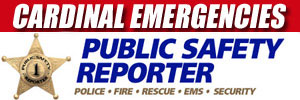When summer comes, you’ll want to be prepared for anything. If you’re taking your boat out on the water, remember these boating safety tips for a safe and fun voyage.
1. Prepare the proper safety equipment.
Ensuring the safety of all individuals aboard your board should be your primary concern. The following list explains some critical equipment that should be on board your vessel:
- Personal flotation device (PFD’s). These come in two forms: standard and inflatable. Standard PFD’s are popular because of their buoyancy and versatility, but those who prefer a wider range of motion may choose to wear Inflatable PFD’s.
- Fire extinguisher. Stow a fire extinguisher aboard, especially if your boat contains fuel tanks and closed living spaces.
- Ventilation. Ducts circulate air in sealed spaces or those with gasoline machinery.
- Sound-producing device. This enables your vessel to avoid and/or warn other approaching boats.
2. Don’t boat under the influence.
Don’t let the high-speed fun of boating on the waters detract from the very significant responsibility of driving sober. Keep away from alcohol or designate another person with boating experience as the primary operator of the craft. Never boat without at least one capable and sober individual aboard the vessel.
3. Insure your boat.
Is it worth it to insure a vehicle that might be used infrequently? The answer is yes, not only because many lenders require boaters to carry insurance, but because boats are costly investments worth protecting. Find yourself a national boat insurance carrier like StateFarm to safeguard your favorite watercraft.
Some boaters face a more challenging road in acquiring boat insurance. If you have a history of driving under the influence, there are companies that will work with you to secure proper boating insurance that is affordable and comprehensive. Without being properly insured, you risk unfortunate mishaps that may lead to license suspension or even fatal injuries.
4. Check for toxic fumes—especially carbon monoxide.
Carbon monoxide poisoning aboard boats is entirely preventable if you follow a few simple steps. Engines powered by gasoline emit carbon dioxide, and in larger boats engine generators blow the gas towards the rear of the boat. Traveling slowly or idling can exacerbate the build up of carbon monoxide in a boat’s cabin, bridge or cockpit. To prevent this, install a CO detector, keep exhaust outlets open and keep children away from all exhaust pipes.
5. Remember the proper anchoring and docking procedures.
Your choice of anchor is dependent on the size and type of your boat as well as the weather conditions. It is recommended that you carry a sufficiently sized anchor for the size of your boat.
6. Check the weather forecast.
Boating during extreme weather conditions is never permissible for amateur boat drivers. The winds and currents during a storm can easily sweep your boat far off shore, and even topple it over. If you ever do find yourself boating in adverse conditions, reduce your speed to avoid running into boats, pump out the bilges so your boat stays above water and get the passengers to remain in the lowest point of the boat, near the centerline.
facebook …
GET ALERTS on Facebook.com/CardinalEmergencies
GET ALERTS on Facebook.com/ArlingtonCardinal
Stay informed with news from PublicSafetyReporter.com’s Emergencies Behind the Scenes Facebook page — Facebook.com/CardinalEmergencies.

